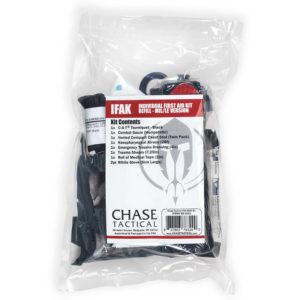Protect Your Family in High-Risk Situations – A Tactical Guide

With an ever more unpredictable world, family safety is high on the agenda for many. From natural disasters to home invasions, civil unrest to medical emergencies, high-risk events can catch you off guard. The secret to keeping your loved ones safe is preparation and awareness, which can put you in control when things do go wrong.
Whether you want to secure your home, learn how to defend yourself, or create a family emergency plan, this blog will walk you through key steps to safeguard your family during emergencies.
Recognizing High-Risk Situations

It is essential to understand the scope of threats you may encounter before delving into details about tactics and strategies. High-risk situations are location-, lifestyle-, and news-dependent. Some typical situations to look at include:
- Home Invasions: Burglars trying to enter your residence to rob, injure, or kidnap.
- Natural disasters, including earthquakes, hurricanes, wildfires, floods, and other extreme events, threaten safety and stability.
- Civil Unrest: Riots, protests, and social unrest that may interfere with public order and generate unsafe conditions.
- Active Shooter Incidents: Crises involving gun violence, typically in public areas, workplaces, or schools.
- Medical Emergencies: Sudden medical crises that must be attended to immediately, e.g., heart attacks, injury, allergic reaction.
Each risk requires a specialized solution so your family can properly prepare for the worst-case scenario.
Methods of Safeguarding Your Family in High-Risk Situations
When it comes to protecting your family in high-risk situations, it’s crucial to have a variety of strategies in place. The key is to be prepared for any emergency, stay calm, and know exactly what to do. Below, we’ve outlined several essential ways to safeguard your loved ones, with actionable steps for each.
1. Create and Practice an Emergency Plan

A plan for emergencies is the cornerstone of any household’s readiness. Take time with your family to outline general steps for various situations, including natural disasters, burglaries, or medical emergencies. Ensure everyone knows ways to exit quickly, safe zones, and emergency contacts.
Regular practice of these plans ensures everyone remains calm and confident during a crisis. This can include rehearsing evacuation drills, knowing where the first aid kit is located, and even running through what to do if communication is lost.
2. Strengthen Home Security
Your home should be your sanctuary, and there are many ways to strengthen its security. These include installing reinforced doors, better locks, and security cameras around the perimeter.
Additionally, ensure that your windows are locked, your outside lighting is functioning properly, and you have a monitored alarm system in place. A safe room or refuge area in your home can provide a secure space during a home invasion or other crisis.
3. Self-Defense and Awareness Training
You must learn how to defend yourself and your loved ones. Enroll in self-defense or martial arts classes that teach practical skills for everyday life.
In addition to physical protection, situational awareness is crucial for effective self-defense. Be aware of potential dangers in advance so you can steer clear of them before they become a threat.
4. Have Emergency Supplies Handy
A fully equipped emergency kit is essential in any high-risk scenario. Your emergency kit should include food, water, first aid supplies, medications, and fundamental survival equipment, such as a flashlight, survival radio, fire starter, and multi-tool.
Consider assembling a “go-bag” for each family member, containing the necessary items they can easily take with them in the event of an evacuation.
5. Create Communication Procedures

Good communication is essential in an emergency. Ensure that every family member understands how to reach others, even when cell service is unavailable. If phones are unavailable, have an alternative means of emergency communication, such as walkie-talkies or a designated meeting point.
Establishing such a protocol will prevent confusion and allow your family to remain reachable during emergencies.
6. Incorporate Fire Safety Precautions
Fires are fast-acting and become a frequent risk in home and outdoor emergencies. Install smoke alarms and fire extinguishers inside your home, and ensure everyone is aware of their proper usage.
Ensure that your household members are familiar with the emergency fire escape paths and have a predetermined meeting location outside the residence where they can gather upon evacuation.
7. Prepare for Medical Emergencies

Medical emergencies might arise at any moment. Educate your family members in basic first-aid skills, such as CPR, stopping blood flow, and treating burns or sprains.
Maintain a fully stocked first-aid kit and any necessary medications on hand. Take a basic first-aid or emergency medical response course to improve your capabilities in dealing with these situations.
8. Plan for Power Outages
Power loss can quickly interrupt your life, whether caused by a storm or equipment malfunction. If you reside in a location prone to frequent power outages, consider installing backup power sources for your home, such as a generator.
Stock up on flashlights, candles, spare batteries, and other necessities. Educate your household on how to cope with extended power loss, use backup lighting safely, and stay updated through battery-powered radios or devices.
9. Develop Mental Resilience
Mental toughness is needed in high-stress emergencies. Develop mental resilience by utilizing stress-management methods such as meditation, deep breathing, and mindfulness exercises.
Help your family stay calm in emergencies and regularly practice these exercises. Good mental strength will enable you to make sound decisions in an emergency.
10. Get Educated and Informed

Knowing can be the difference between being ready and being caught unaware. Stay informed about current events, weather forecasts, and local emergency notifications.
Enroll in local alerts regarding threats to your region, such as natural disasters, civil disturbances, or other emergencies. Learning survival techniques, first aid, and safety procedures will make you a better asset in any crisis.
Conclusion
Defending your family in high-risk scenarios takes a multi-layered approach. By developing a thorough emergency plan, enhancing home security, becoming proficient in self-defense, and having vital supplies readily available, you can plan for multiple types of potential threats.
Remember, the key to family safety lies in being proactive, staying calm under pressure, and taking the necessary steps to ensure you’re ready for whatever comes your way. Stay vigilant, stay prepared, and prioritize your family’s safety.
Frequently Asked Questions
How often should I update my family’s emergency plan?
Your emergency plan should be reviewed and revised at least annually, as well as after major life changes, such as relocating to a new residence or having a child.
What are the most important items in an emergency kit?
These essential supplies are water, non-perishable food, a first-aid kit, medications, flashlights, a multi-tool, and necessary documents. Customize the kit to suit your family’s needs, such as including baby or pet supplies.
